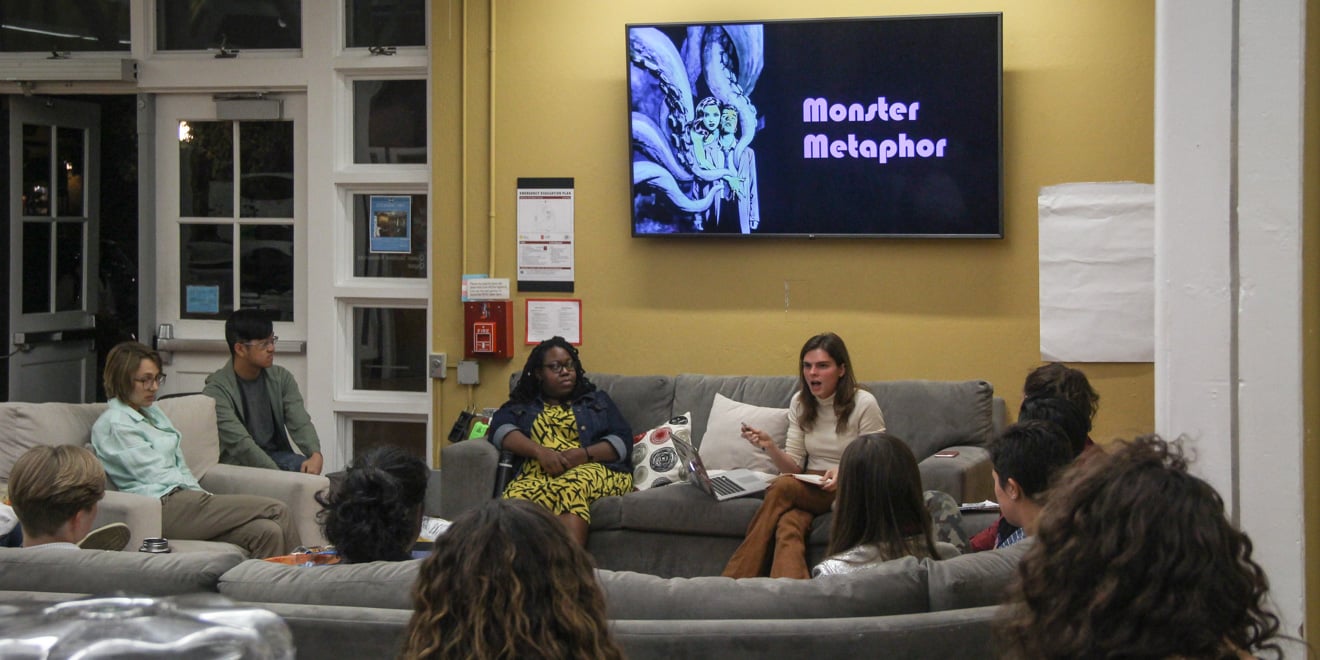The Women’s Community Center (WCC) held its second Feminist Discussion on Wednesday to discuss transgender rights at Stanford in light of a recently leaked memo that revealed the Trump administration is considering narrowing the definition of gender to sex assigned at birth.
Phoebe Oathout ’18 M.A. ’19, the WCC’s Feminist Discussion coordinator, began the event with a brief presentation on transgender history in America and at Stanford.
In 1968, the Stanford University Medical Center started the Gender Dysphoria Program, an initiative designed to help patients with legal name changes, counseling, hormone therapy and surgical care.
Oathout, however, criticized cisgender white surgeons of the program who overemphasized the need for surgery in individuals’ transitions.
“The Stanford Gender Dysphoria Program created a single narrative paradigm of transition that is still the only way we understand gender today,” Oathout said.
The discussion was then opened up to students, who were given the opportunity to share their views on the transgender experience, the effects of the Gender Dysphoria Program and the Trump administration memo.
For Tyler Miller ’19, Trump’s memo pressured him to speed up certain decisions regarding his transition, particularly when it came to legally changing his name.
“My initial reaction to the memo was to immediately get my court documents filled out to change my name because [the memo] was about the legal definition of what you are,” Miller said. “I’ve been living with [the] name [Tyler] for nine months, and I’m not willing to change my [legal] name, and disconnecting myself from the name given to me by my parents. I was forced to do this thing in a timeline that was not my own.”
Oathout believes the memo was a setback to transgender rights, arguing that “Trump’s memo [is] even further behind than the [Stanford] Gender Dysphoria Program.”
According to Miller, the program portrayed gender transitions as a discrete series of significant moments.
“We see transition in moments, such as your name, surgery, etc.,” Miller said. “There’s a before, the [changing] moment, and after. My experience has not been about moments but an everyday thing.”
Students also discussed how people could be more understanding and accepting of those who are transgender.
“Use they/them pronouns,” said first year engineering masters student Timneh Zimet. “Don’t just take the easy way out. Don’t make the person who doesn’t have a cis identity explain everything themselves.”
Luke Soon-Shiong ’19 emphasized the importance of making an effort to understand a transgender person’s experience.
“[It’s] one thing to hear someone, another to internalize,” he said. “You can use pronouns, but it depends on how you treat them.”
Oathout acknowledged that despite the pitfalls of the Gender Dysphoria Program, the university as whole is further ahead than most communities. She argued that Stanford itself provides protection that other communities do not have, especially for transgender women of color.
Zimet agreed that Stanford is generally a liberal and accepting community.
“On one hand, you can forget it’s worse in other places, but on the other hand, I have a better idea on how an inclusive environment should look, even though it’s not perfect,” she said. “Hopefully we can apply this outside of Stanford and make it a more comfortable environment.”
Contact Aparna Verma at ‘averma2’ at stanford.edu.
The Daily article has been corrected to reflect Stanford provides protection, not understanding, that other communities do not have. The Daily regrets this error.
